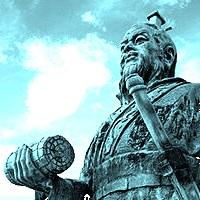
The Art of Doing Nothing, Part Four
In parts one, two, and three of this article, I described the unusual concept of "doing nothing." In this article we'll discuss when it is appropriate to use this idea.
Once upon a time, I showed my game vs. Nakamura as an example of "doing nothing" to one of my students. At that point he was slightly above USCF 2200, and I thought he was at an appropriate level to appreciate this advanced concept. To my horror, he started "doing nothing" in one of his games where he really needed to do something! Of course, he was promptly crushed by his opponent. So, let me reiterate the key features of a position where you might consider "doing nothing." The position must meet all three of the following conditions:
- You absolutely, positively have no good plan.
- Your pieces are on their best squares so you cannot possibly improve any of them.
- You are well prepared for any possible activity of your opponent.
Sometimes even very strong chess players make bad judgment calls, and the following game is a good example:
The position on the diagram is clearly in White's favor since the isolated d5 pawn is very weak. Spassky decided to switch to "doing nothing," and Karpov was able to produce an instructive example of how to win against an isolated pawn. While Spassky might think that the position met criteria one and two (It is indeed not easy to find an active plan for Black, and also he probably thought that his pieces would be relatively well placed!), condition three simply wasn't met. White had almost unlimited possibilities to improve his position, and sooner or later Black's defense was bound to collapse. What should you do in situations like this when "doing nothing" is not an option and you have no good plan?
“Attack is the secret of defense; defense is the planning of an attack.”
- Sun Tzu
Following this stratagem of Sun Tzu, Karpov recommends a very interesting sacrifice: 21...Rxc3 22. bxc3 Qa5. While Black's position is still not particularly good, at least he gets some counterplay against White's weak pawns on the queenside. From a practical point of view, it was a much better decision since it's more challenging for White to find the best moves when his opponent has some pesky threats - particularly when compared to the game variation where Karpov could slowly improve the position at his leisure!
Now let me address a question posted in your comments to the previous installments of the article. A reader asked what happens if your opponent starts repeating his moves as well (basically doing nothing too).
Against Nakamura, I wouldn't lose any sleep over such an improbable outcome. You should know Nakamura and how he despises draws. Here are two very graphic examples:
When they started repeating the moves, and it became clear that Kramnik was ready for a draw, Nakamura played 23. Nb1!?!? I don't know how to describe this move. For many chess players it would be easier to resign a game rather than play such a move. It is especially difficult to play such a move against one of the strongest players in the World!
Nakamura won that remarkable game, but of course such fighting spirit can easily backfire:
Here Nakamura avoids a threefold repetition of the position and immediately drops a pawn which ultimately cost him the game. Generally speaking, "doing nothing" or repeating the moves can be a very strong psychological weapon. We make our opponent believe that we don't mind a draw which confuses him in many cases. I was a victim of this strategy numerous times, so I know what I'm talking about. We discussed such a situation in my article: To Err is Human, Part Three.
"Mystify, mislead, and surprise the enemy”
- Sun Tzu
Here is one of the recent examples from an elite tournament:
You can possibly ask: what the heck was 21. Rc2 followed by 22.Rcc1 about?
Well, look at the position. To say that Black is very solid is an understatement. The lyrics of a popular song describe it best: "I am bulletproof. I am titanium." So crafty Magnus moves his rook back and forth while Kamsky gets an idea that his position is better and that he has a good chance to beat Carlsen. About ten moves later, after a bunch of very active pawn moves, Black's position was ruined.

I know it is very confusing. Sometimes the concept of "doing nothing" is the best you can do and sometimes it is a sure "kiss of death." What should a poor chess player do? Usually, as you get stronger in chess and get more experience, you will better understand the requirements of a particular position. But above all, remember the Serenity Prayer:
Grant me the serenity to accept the things I cannot change,
The courage to change the things I can,
And wisdom to know the difference.
RELATED STUDY MATERIAL
- Check out Part One, Part Two and Part Three of this series;
- Watch as GM Alex Yermolinsky helps revolutionize your approach to chess in Magnus Stands Alone! – Part 1;
- Find your zen warrior in Chess Mentor;
- Become a tactical machine with our Tactics Trainer;
- Looking for articles with deeper analysis? Try our magazine: The Master's Bulletin.






